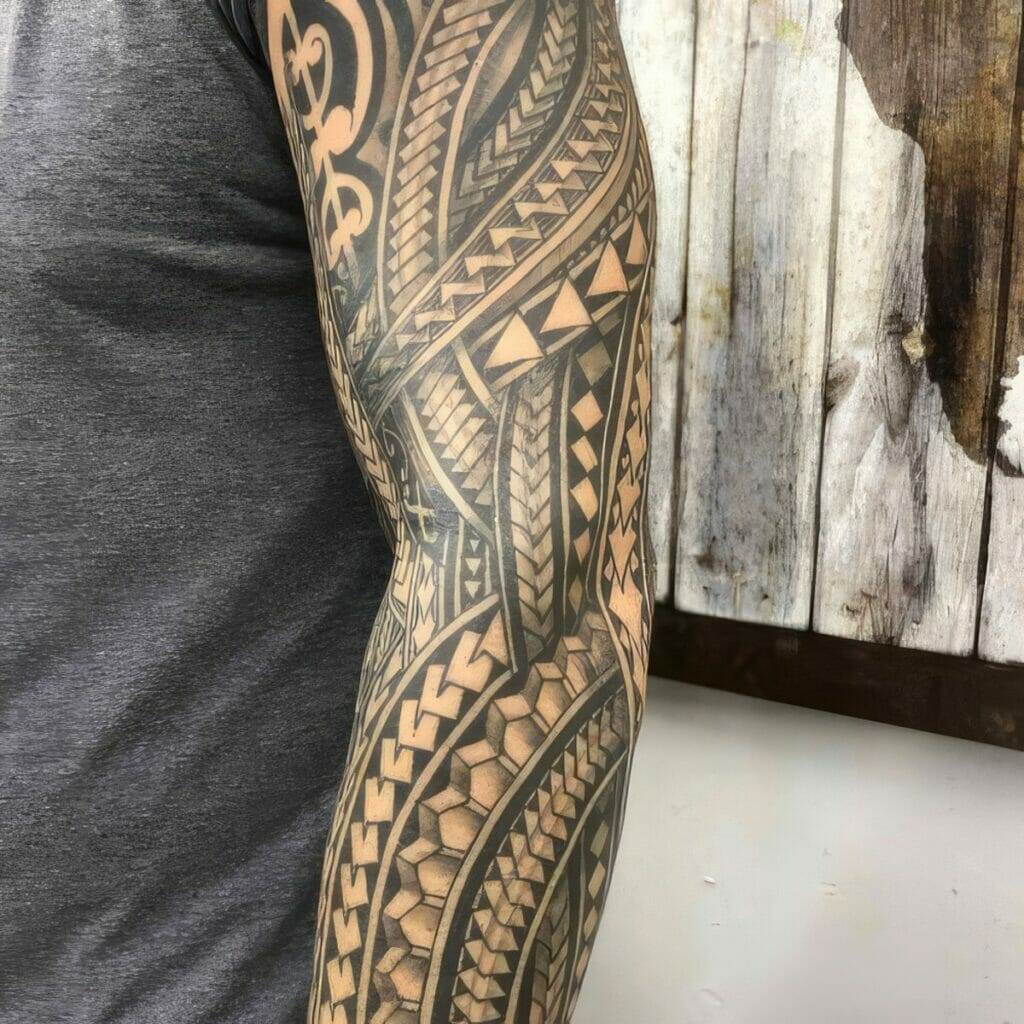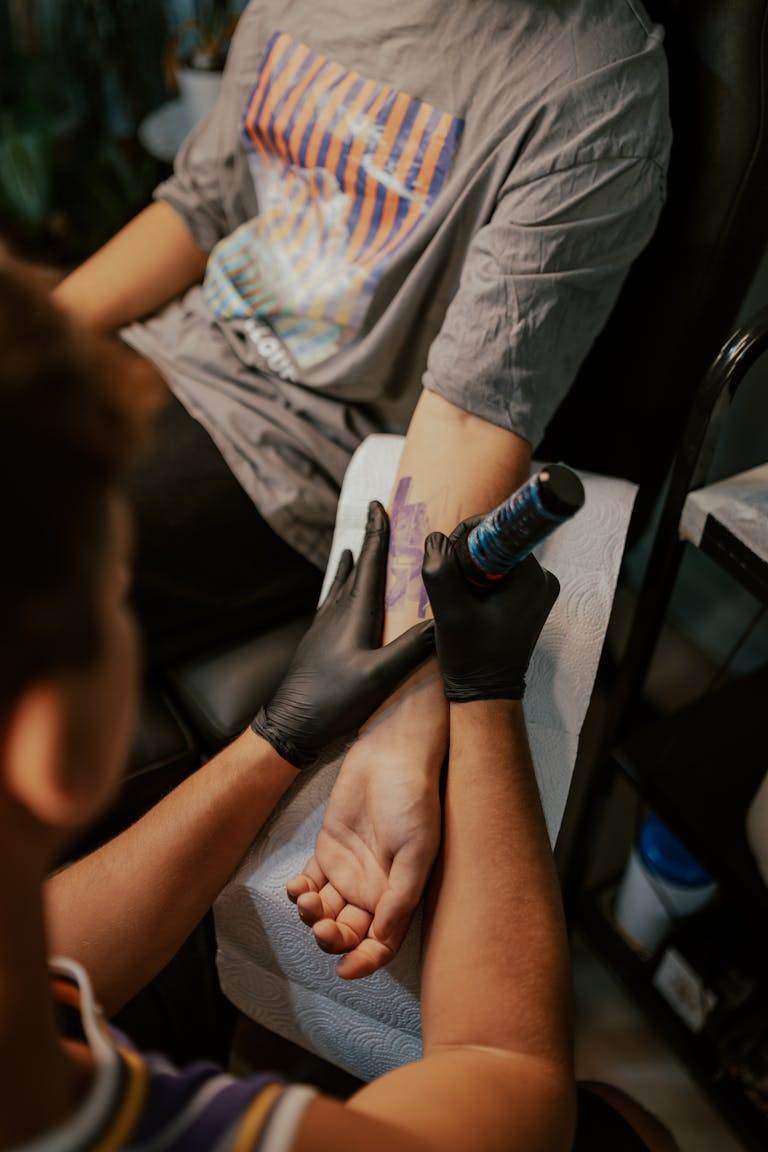
Introduction
Brief History of Tribal Tattoos
Tribal tattoos have a rich and fascinating history, one that resonates deeply with the cultures and communities that created them. Originating from ancient civilizations, these tattoos were not merely a form of body art; they served crucial social, spiritual, and traditional purposes that continue to be appreciated today. Across various cultures, tribal tattoos can tell stories, signify status, or mark significant life milestones. For example, in Polynesian cultures, tattoos served as rites of passage, often taking years to complete and representing a deep connection to ancestry and the ocean.
Key Aspects of Tribal Tattoos:
- Cultural Significance: Tribal tattoos often symbolize personal and communal identity. For many indigenous tribes, they are a mark of pride and heritage, connecting individuals to their ancestors and land.
- Techniques and Tools: The techniques used in tribal tattooing have evolved over centuries. Traditionally, tattoos were applied using sharpened sticks, fish bones, or even thorny plants—methods that required immense skill and artistry.
- Symbolism and Patterns: The designs typically feature geometric shapes, spirals, and natural motifs which convey various meanings such as strength, protection, and fertility. Each element in a tattoo carries a specific narrative, making the art form deeply individual yet universally understood within its cultural context.
- Ritual and Ceremony: For many tribes, the process of tattooing itself is a ceremonial act, often taking place during significant community celebrations or rites of passage. This transforms the experience from a mere act of decoration to a sacred ritual.
In summary, the history of tribal tattoos is a tapestry woven with cultural significance, artistry, and tradition. Understanding this background is essential for appreciating the modern interpretations that stem from these ancient practices. As we delve deeper into the various designs and meanings, it’s clear that tribal tattoos continue to evolve while maintaining their profound roots across generations.
Traditional Tribal Tattoo Patterns
Polynesian Designs
Polynesian tattoo designs are celebrated for their intricate patterns and profound symbolism. Originating from the islands of the Pacific, such as Samoa, Tonga, and Fiji, these tattoos are often viewed as a celebration of identity and community. Each Polynesian tattoo carries a specific meaning, often reflecting the individual’s life experiences, social standing, and connection to their heritage.
Common Elements of Polynesian Tattoos:
Shapes and Lines: Polynesian tattoos typically consist of strong black lines and geometric shapes, often intertwining to create complex patterns that adorn large portions of the body, including arms, legs, and backs.
Symbols of Nature: Many designs feature motifs derived from nature, such as waves, fish, and birds. For instance:
- The Wave symbolizes the ocean’s importance, often representing strength and adaptability.
- The Turtle signifies wisdom and longevity, embodying the connection between land and sea.
Rites of Passage: In Polynesian culture, tattoos are often a rite of passage. A person’s journey, struggles, and victories are etched permanently into their skin, marking their growth and experiences.
Maori Designs
Transitioning from the beauty of Polynesian designs, we delve into the world of Maori tattoos, known as “Ta Moko.” These tattoos are deeply embedded in New Zealand’s history and signify not only individual identity but also tribal affiliation and heritage.
Unique Aspects of Maori Tattoos:
- Spiral Patterns: Maori tattoos often incorporate spiral motifs and intricate curves known as “koru,” symbolizing new life, growth, and harmony. They tell stories of ancestors and the personal journey of the wearer.
- Facial Tattoos: Unlike many other cultures, Maori tattoos famously include facial markings called “moko.” These tattoos convey powerful stories about the individual’s ancestry and social status. For example:
- Moko Kauae (female chin tattoo) signifies a woman’s lineage and is often seen as a rite of passage into womanhood.
- Moko for men might cover the entire face and body, reflecting strength and bravery.
- Cultural Revival: In recent years, there has been a resurgence in the appreciation and practice of traditional Maori tattooing. This revival honors cultural heritage and allows individuals to reconnect with their roots.
Both Polynesian and Maori designs reflect a profound understanding of identity and community through tattoo art. As these patterns continue to influence modern artistry, they remain cherished connections to ancestral histories and collective memory.

Modern Interpretations of Tribal Tattoos
The evolution of tribal tattoos has been a fascinating journey, with contemporary interpretations taking center stage in the world of body art. While traditional designs maintain their cultural significance, modern interpretations offer a fresh perspective, blending ancient meanings with current artistic trends. This fusion creates a unique canvas where personal expression flourishes alongside historical homage.
Contemporary Design Elements
Today’s tribal tattoos often embrace a variety of styles, giving room for creativity and personalization. Artists infuse traditional patterns with modern aesthetics, resulting in designs that appeal to a broader audience. Some notable elements include:
- Minimalist Attributes: Modern tribal tattoos frequently feature simplified lines and shapes, appealing to those who prefer a subtle yet impactful look. This minimalism often retains the essence of traditional designs while catering to contemporary tastes.
- Color Infusion: While traditional tribal tattoos are predominantly black, many modern interpretations incorporate bold colors. This not only enhances the visual appeal but also allows for a greater level of personal expression.
- Abstract Characteristics: Skewed interpretations of tribal designs lead to an abstract representation that might prioritize aesthetic beauty over cultural significance. This can sometimes blur the line between homage and appropriation, leading to discussions about cultural sensitivity.
Personalization and Meaning
One of the most fascinating aspects of modern tribal tattoos is their emphasis on personal meaning. Unlike in traditional contexts, where designs are often communal and standardized, today’s wearers frequently choose patterns that resonate with their individual experiences. Some points to consider include:
- Incorporating Personal Symbols: Many individuals blend traditional elements with personal symbols that hold specific meanings in their lives, creating a tattoo that is entirely their own.
- Stories and Narratives: Modern tattooists often encourage clients to share their stories, allowing for custom designs that reflect personal journeys, values, and beliefs. This practice deepens the wearer’s connection to their tattoo, transforming it into a powerful narrative on skin.
In conclusion, modern interpretations of tribal tattoos represent a vibrant tapestry of tradition and individual expression. As artists and clients collaborate to create meaningful art, the respect for original cultures remains paramount, fostering a dialogue between the past and present. This dynamic continues to shape the landscape of tattoo artistry, inviting a new generation to explore the beauty of tribal designs while respecting their storied heritage.
Contemporary Artists Influenced by Tribal Patterns
As tribal tattoos continue to evolve and inspire, contemporary artists around the globe are weaving these ancient designs into their own unique styles. The influence of tribal patterns can be seen not only in traditional tattoo shops but in various forms of body art, graphic design, and even fashion. This cross-pollination of ideas highlights the adaptability of tribal motifs while celebrating their enduring legacy.
Innovative Approaches to Traditional Patterns
Modern artists are reimagining tribal tattoos to create pieces that resonate with a contemporary audience. Here are some innovative approaches seen in modern artistry:
- Geometric Designs: Many contemporary tattoo artists incorporate geometric shapes and abstract forms into their tribal designs. This shift towards geometry allows for a clean, modern aesthetic that appeals to minimalists while still paying homage to traditional motifs.
- Mixed Media: Artists are experimenting beyond just ink on skin. Some tattooists are collaborating with illustrators and graphic designers to create tattoo art that incorporates ink sketches, watercolor techniques, and even digital art styles, broadening the perception of what tribal tattoos can encompass.
- Cultural Fusion: Contemporary artists often blend tribal patterns from different cultures, resulting in diverse interpretations that celebrate a global perspective. This fusion can create stunning visuals that honor various heritages while crafting a cohesive new narrative.
Impact on Popular Culture and Artistry
The infusion of tribal elements into contemporary art has influenced the broader world of fashion, graphic novels, and digital media too. Some notable impacts include:
- Fashion Trends: Influencers and fashion designers often feature tribal-inspired prints and patterns in their collections, promoting individuality and the allure of ancient designs. This trend reinforces the idea that tribal artistry is not limited to tattoos alone but can span entire fashion lines.
- Gallery Exhibitions: Many contemporary artists are showcasing installations that highlight the beauty of tribal traditions. Art exhibits featuring body art, photographs of tattooed individuals, and mixed media installations engage audiences while educating them on the cultural significance behind tribal designs.
In summary, contemporary artists are significantly shaping the narrative surrounding tribal patterns, ensuring that the essence of these ancient designs lives on in modern artistry. Through innovative methods and cultural exploration, they are opening doors for a dialogue that respects tradition while inviting a new wave of creativity. This intersection of old and new further enriches the tapestry of tattoo art, offering endless possibilities for personal expression and aesthetic exploration.
Evolution of Tribal Tattoos in Pop Culture
The journey of tribal tattoos within popular culture reflects a fascinating evolution, where these ancient symbols have transitioned from traditional emblems to modern-day trends. This transformation not only signifies changing aesthetics but also highlights the complex relationship between cultural heritage and contemporary expression. As we delve into this evolution, it’s clear that tribal tattoos have woven their way into the fabric of modern identity.
Rise of Tribal Tattoos in the 1990s
The 1990s marked a turning point for tribal tattoos, as they gained immense popularity, especially among young people seeking to express individuality. This era saw:
- Celebrity Influence: Stars such as athletes, musicians, and movie icons adorned themselves with tribal tattoos, creating a ripple effect. Their choices often inspired fans to follow suit, leading to the widespread acceptance of body art as a fashion statement.
- Mainstream Acceptance: Tribal tattoos began appearing prominently in tattoo parlors as clients eagerly requested their own versions of popular designs. The traditional taboo surrounding tattoos started to fade, making way for a new culture of acceptance.
- Mismatch of Meaning: As tribal tattoos became synonymous with rebellion and personal expression, some practitioners voiced concerns over the authenticity of their meanings. This, in turn, sparked discussions about cultural appropriation and the responsibility of artists and wearers alike.
Current Trends and Cultural Reawakening
Fast forward to today, and tribal tattoos continue to influence pop culture, though they are being approached with more awareness than in the past. Noteworthy trends emerging in this era include:
- Ethical Considerations: There is a growing recognition of the importance of understanding the cultural significance behind tribal designs before getting a tattoo. More individuals are researching and seeking out artists who respect and honor these traditions, fostering a sense of mutual respect.
- Cultural Revitalization: Many indigenous communities are reclaiming their art forms and encouraging the revitalization of their tattooing practices, sharing their stories and heritage with the world. This effort not only preserves their culture but also enriches the global landscape of tattoo artistry.
- Integration into Fashion and Media: Today, tribal patterns are prevalent in fashion, graphic design, and visual art. From runway shows to music videos, these designs are celebrated for their aesthetic appeal, while still acknowledging their roots in tradition.
In summary, the evolution of tribal tattoos in pop culture underscores a rich interplay of history, identity, and modernity. As these tattoos continue to adapt and thrive, they invite ongoing discussions about cultural identity and representation, informing how we engage with art and heritage. This journey is a testament to the enduring power of tribal tattoos, proving that their significance transcends time and trend.














